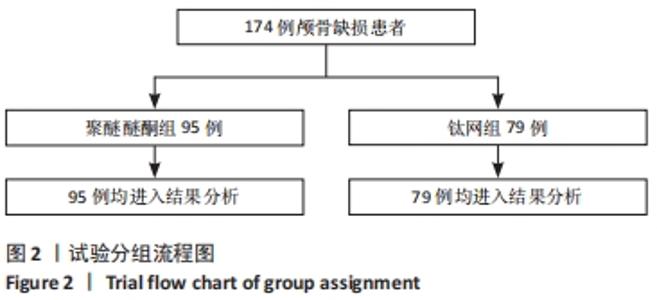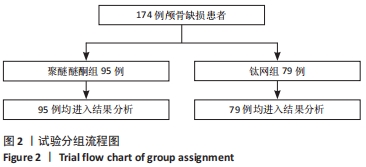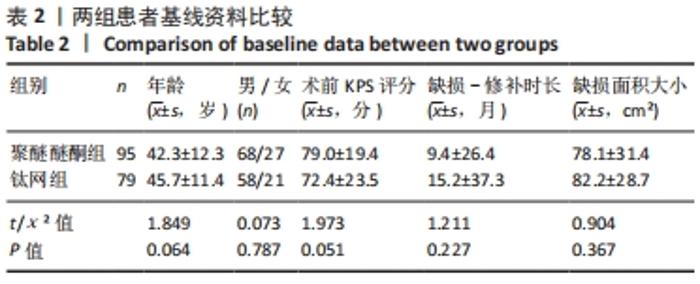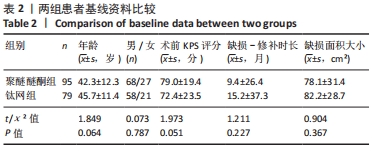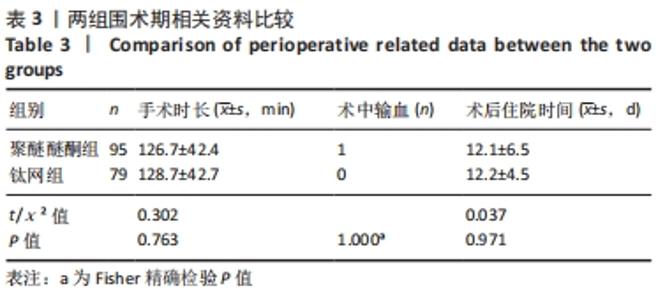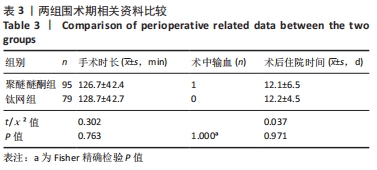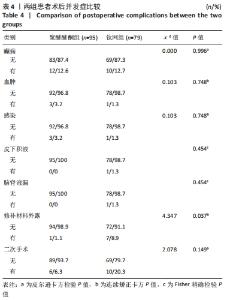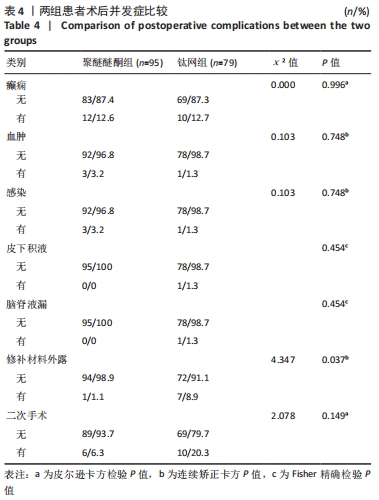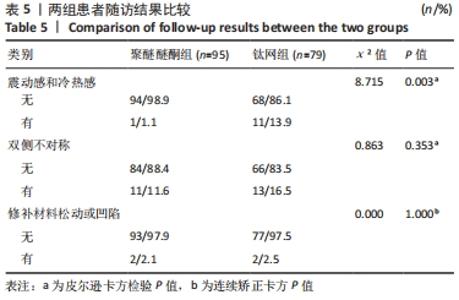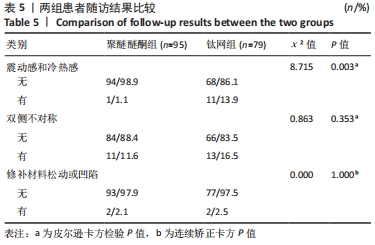[1] 中华神经外科学会神经创伤专业组.颅脑创伤去骨瓣减压术中国专家共识[J].中华神经创伤外科电子杂志,2015,1(2):6-8.
[2] SHAHID A, MOHANTY M, SINGLA N, et al. The effect of cranioplasty following decompressive craniectomy on cerebral blood perfusion, neurological, and cognitive outcome. J Neurosurg. 2018;128(1):229-235.
[3] HALANI S, CHU J, MALCOLM J, et al. Effects of Cranioplasty on Cerebral Blood Flow Following Decompressive Craniectomy: A Systematic Review of the Literature. Neurosurgery. 2017;81(2):204-216.
[4] ZHANG J, TIAN W, CHEN J, et al. The application of polyetheretherketone (PEEK) implants in cranioplasty. Brain Res Bull. 2019;153:143-149.
[5] SIRACUSA V, MAIMONE G, ANTONELLI V, et al. State-of-Art of Standard and Innovative Materials Used in Cranioplasty. Polymers (Basel). 2021; 13(9):1452-1452.
[6] YEAP M, TU P, LIU Z, et al. Long-Term Complications of Cranioplasty Using Stored Autologous Bone Graft, Three-Dimensional Polymethyl Methacrylate,or Titanium Mesh After Decompressive Craniectomy:A Single-Center Experience After 596 Procedures. World Neurosurg. 2019;128:e841-e850.
[7] 周剑云,张新,高海滨,等.聚醚醚酮与钛网治疗去骨瓣减压术后颅骨缺损效果的对比分析[J].中国微侵袭神经外科杂志,2021, 26(1):7-10.
[8] LEE C, CHUNG Y, LEE S, et al. Analysis of the factors influencing bone graft infection after cranioplasty. J Trauma Acute Care Surg. 2012;73(1): 255-260.
[9] WACHTER D, REINEKE K, BEHM T, et al. Cranioplasty after decompressive hemicraniectomy: underestimated surgery-associated complications? Clin Neurol Neurosurg. 2013;115(8):1293-1297.
[10] 郭效东,路小奇,王振华,等.颅骨缺损患者颅骨修补术后癫痫发作的危险因素分析[J].中华神经外科杂志,2020,36(4):370-374.
[11] CHEN F, DUAN Y, LI Y, et al. Use of an antiepileptic drug to control epileptic seizures associated with cranioplasty: A randomized controlled trial. Int J Surg. 2017;40:113-116.
[12] YEAP M, CHEN C, LIU Z, et al. Postcranioplasty seizures following decompressive craniectomy and seizure prophylaxis: a retrospective analysis at a single institution. J Neurosurg. 2018;131(3):936-940.
[13] ROSINSKI C, PATEL S, GEEVER B, et al. A Retrospective Comparative Analysis of Titanium Mesh and Custom Implants for Cranioplasty. Neurosurgery. 2020;86(1):15-22.
[14] CHEN Y, ZHANG L, QIN T, et al. Evaluation of neurosurgical implant infection rates and associated pathogens: evidence from 1118 postoperative infections. Neurosurg Focus. 2019;47(2):E6.
[15] KIM H, SUNG S, KIM S, et al. Analysis of the factors affecting graft infection after cranioplasty. J Craniomaxillofac Surg. 2013;155(11): 2171-2176.
[16] ABODE-IYAMAH K, CHIANG H, WINSLOW N, et al. Risk factors for surgical site infections and assessment of vancomycin powder as a preventive measure in patients undergoing first-time cranioplasty. J Neurosurg. 2018;128(4):1241-1249.
[17] XU X, LI Y, WANG L, et al. Triple-functional polyetheretherketone surface with enhanced bacteriostasis and anti-inflammatory and osseointegrative properties for implant application. Biomaterials. 2019; 212:98-114.
[18] ZHU S, CHEN Y, LIN F, et al. Complications following titanium cranioplasty compared with nontitanium implants cranioplasty: A systematic review and meta-analysis. J Clin Neurosci. 2021;84:66-74.
[19] THIEN A, KING N, ANG B, et al. Comparison of polyetheretherketone and titanium cranioplasty after decompressive craniectomy. World Neurosurg. 2015;83(2):176-180.
[20] 吴国鑫,黄金楷,蔡刚峰,等.颅骨修补术后钛板外露的原因分析及防治[J].中华神经外科杂志,2017,33(10):1040-1041.
[21] VELDEMAN M, DALEIDEN L, HAMOU H, et al. An altered posterior question-mark incision is associated with a reduced infection rate of cranioplasty after decompressive hemicraniectomy. J Neurosurg. 2020;134(3):1262-1270.
[22] LAS D, VERWILGHEN D, MOMMAERTS M, et al. A systematic review of cranioplasty material toxicity in human subjects. J Craniomaxillofac Surg. 2021;49(1):34-46.
[23] SUN Y, HU Y, YUAN Q, et al. Association between metal hypersensitivity and implant failure in patients who underwent titanium cranioplasty. J Neurosurg. 2018;131(1):40-46.
[24] 曹轲,李宗正,刘玉飞,等.自体骨与钛网两种颅骨修补方案的疗效分析[J].中华神经外科杂志,2015,31(9):918-922.
[25] LETHAUS B, SAFI Y, LAAK-POORT M, et al. Cranioplasty with customized titanium and PEEK implants in a mechanical stress model. J Neurotrauma. 2012;29(6):1077-1083.
[26] 张海防.不同材料修复颅骨缺损的比较[J].中国组织工程研究,2016, 20(34):5142-5148.
[27] QIN L, YAO S, ZHAO J, et al. Review on Development and Dental Applications of Polyetheretherketone-Based Biomaterials and Restorations. Materials. 2021;14(2):408.
[28] WANG L, HE S, WU X, et al. Polyetheretherketone/nano-fluorohydroxyapatite composite with antimicrobial activity and osseointegration properties. Biomaterials. 2014;35(25):6758-6775.
[29] RASHIDI A, ADOLF D, KARAGIANNIS D, et al. Incidence and Risk Factors for Skull Implant Displacement After Cranial Surgery. World Neurosurgery. 2019;126:e814-e818.
[30] ROSENTHAL G, NG I, MOSCOVICI S, et al. Polyetheretherketone implants for the repair of large cranial defects: a 3-center experience. Neurosurgery. 2014;75(5):523-529.
[31] PARK S, PARK E, SHIM K, et al. Modified Cranioplasty Technique Using 3-Dimensional Printed Implants in Preventing Temporalis Muscle Hollowing. World neurosurgery. 2019;126:e1160-e1168.
[32] BINHAMMER A, JAKUBOWSKI J, ANTONYSHYN O, et al. Comparative Cost-Effectiveness of Cranioplasty Implants. Plastic Surgery. 2020;28(1): 29-39.
|
